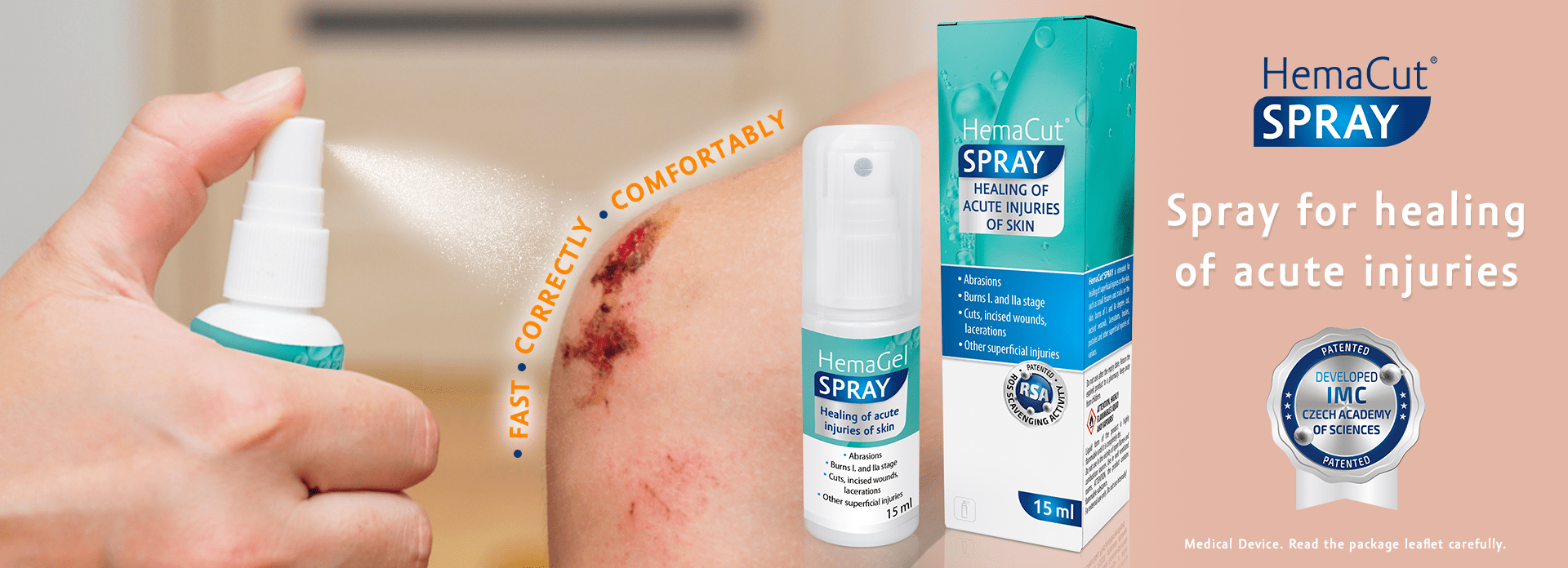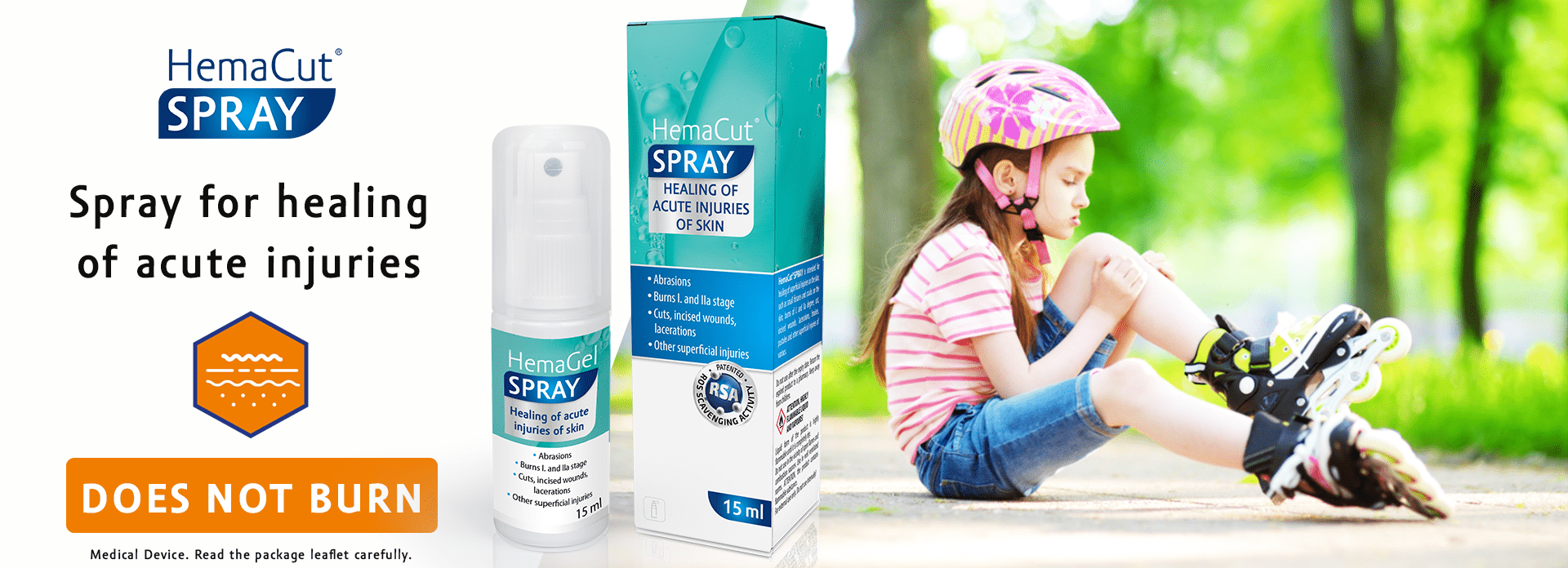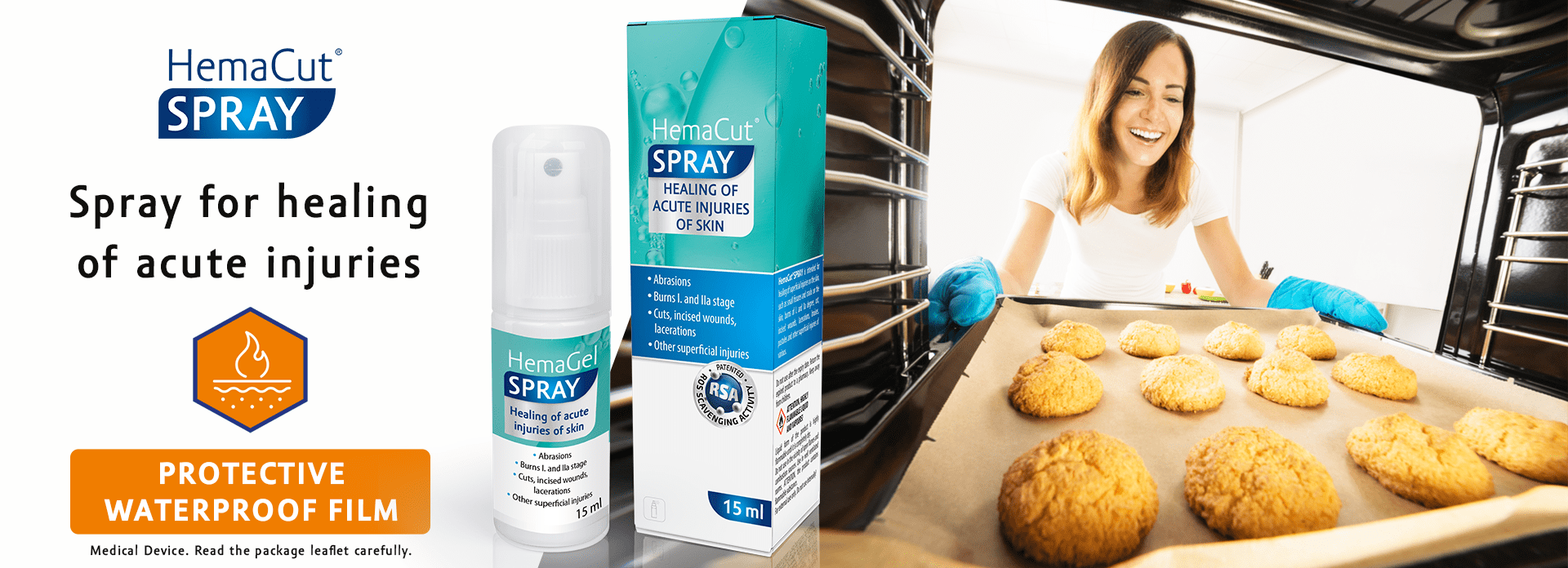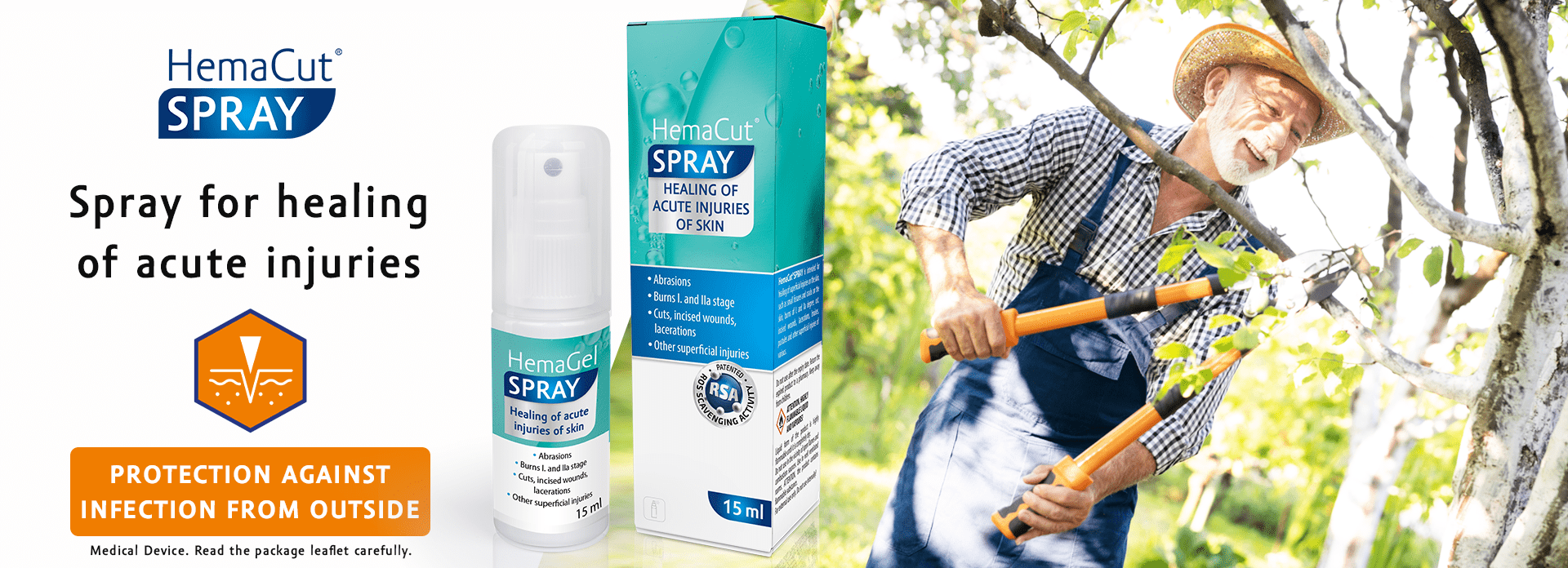





What is HemaCut®SPRAY?
HemaCut® SPRAY is a medical device developed and patented by the Institute of Macromolecular Chemistry of the Czech Academy of Sciences. It contains TRISS crosslinked polymer and thanks to its properties:
- Creates a thin, waterproof, transparent film on the skin
- Protects the wound from infection from the outside
- DOES NOT BURN after application
- Accelerates healing thanks to the principle of RSA technology
- Application only once a day


How does HemaCut® SPRAY work?
During healing, reactive oxygen species (ROS) may be overproduced in the wound due to various processes.
If this happens, this fact often leads to a greater or lesser slowdown of healing, its complications or even to a complete cessation of the healing process of an acute wound. For this reason, the scientific team focused on these ROS and their possible "deactivation" when developing the medical device HemaCut® SPRAY. Once sprayed on the wound, the polymer forms a thin layer that adheres to the entire surface of the wound and, among other things, creates a barrier against the entry of infection and other impurities from the outside. Thanks to its structure, the polymer begins to bind to itself the already mentioned ROS (RSA technology)
 and also to harmonize possible bacterial colonization at the site of injury. This optimizes the environment on the wound surface and supports the smooth running of the entire healing process of the acute wound.
and also to harmonize possible bacterial colonization at the site of injury. This optimizes the environment on the wound surface and supports the smooth running of the entire healing process of the acute wound.
How to use HemaCut® SPRAY?


Wash the wound under running water and let it dry or dry it carefully. For fresh wounds, stop the bleeding first.
On SMALL WOUNDS, apply the spray from the distance of 1-2 cm so that the dispersion of the spray is as small as possible.


On LARGE WOUNDS, spray from the distance of 4-8 cm depending on the extent of the wound so that the polymer is applied to as large an area of injury as possible.


Apply the spray in one or two layers. Between each spraying, wait 10 seconds for the first polymer layer dries.

Application 1x in 24 hours or 1x in 12 hours, if the condition of the wound requires it or the wound is in a mechanically very strained place (e.g. the palm of the hand, the sole of the foot, etc.). The polymer forms a thin, waterproof layer that does not rub off and wash off from the skin and wound.

Before the next application, all you have to do is rinse the wound again under running water and dry it.

Before using the spray, mechanically remove any dried polymer particles from the spray nozzle with your fingernail or finger. So as not to prevent dispersion of the spray.






